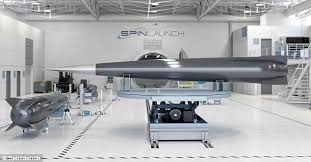
Breaking News
 Pentagon Partners With xAI Service For Military's Growing Artificial Intelligence Toolset
Pentagon Partners With xAI Service For Military's Growing Artificial Intelligence Toolset
 Pharmakeia: America's Seniors Are Being Overmedicated Into Oblivion
Pharmakeia: America's Seniors Are Being Overmedicated Into Oblivion
 The New Battle for the Americas: Why the Western Hemisphere Is Becoming a Global...
The New Battle for the Americas: Why the Western Hemisphere Is Becoming a Global...
Top Tech News
 Travel gadget promises to dry and iron your clothes – totally hands-free
Travel gadget promises to dry and iron your clothes – totally hands-free
 Perfect Aircrete, Kitchen Ingredients.
Perfect Aircrete, Kitchen Ingredients.
 Futuristic pixel-raising display lets you feel what's onscreen
Futuristic pixel-raising display lets you feel what's onscreen
 Cutting-Edge Facility Generates Pure Water and Hydrogen Fuel from Seawater for Mere Pennies
Cutting-Edge Facility Generates Pure Water and Hydrogen Fuel from Seawater for Mere Pennies
 This tiny dev board is packed with features for ambitious makers
This tiny dev board is packed with features for ambitious makers
 Scientists Discover Gel to Regrow Tooth Enamel
Scientists Discover Gel to Regrow Tooth Enamel
 Vitamin C and Dandelion Root Killing Cancer Cells -- as Former CDC Director Calls for COVID-19...
Vitamin C and Dandelion Root Killing Cancer Cells -- as Former CDC Director Calls for COVID-19...
 Galactic Brain: US firm plans space-based data centers, power grid to challenge China
Galactic Brain: US firm plans space-based data centers, power grid to challenge China
 A microbial cleanup for glyphosate just earned a patent. Here's why that matters
A microbial cleanup for glyphosate just earned a patent. Here's why that matters
 Japan Breaks Internet Speed Record with 5 Million Times Faster Data Transfer
Japan Breaks Internet Speed Record with 5 Million Times Faster Data Transfer
Spinlaunch has $40 million to fund development to first centrifuge space launch by 2022

This syndicate joins institutional investors including Lauder Partners, ATW Partners, Bolt, and Starlight Ventures to total $40 million. Investment funds will be used to scale the team and technology, through first launch by 2022.
SpinLaunch is revolutionizing access to space by developing a kinetic energy launch system designed to provide the world's lowest-cost orbital launch service for the rapidly growing small satellite industry. Their environmentally responsible approach is unmatched in the industry. SpinLaunch is currently considering four different states for potential launch sites within the United States.
Spinlaunch use large centrifuges to store energy and will then rapidly transfer that momentum into a catapult to send a payload to space at up to 4,800 kilometers per hour (3,000 mph). If successful, the acceleration architecture is projected to be both lower cost and use much less power, with the price of a single space launch reduced to under US$500,000.
SpinLaunch appears to be an evolution of the 1997 Derek Tidman Slingatron proposal. It is best suited to launch bulk materials such as water, fuel, building materials, radiation shielding, g-load-hardened satellites, etc. into orbit. It cannot launch people or very delicate equipment due to high acceleration (g) loads experienced during the launch cycle.

 No Excuses: Throw A Party!
No Excuses: Throw A Party!


